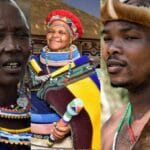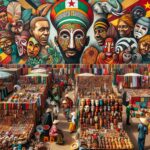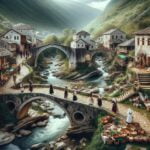Navajo clans (Dine’é kinship) are a complex matrilineal system that shapes identity, governs social interactions, and connects individuals to a rich ancestral heritage. More than just names, Navajo clan designations represent deep-rooted connections to ancestral origins, embodying history, traditions, and spiritual beliefs. Understanding Navajo clans requires exploring the intricate kinship system (K’é) which dictates marriage practices, inheritance, and leadership roles within the community. While often listed as originating from a smaller number, the Navajo clan system is dynamic and variations exist, reflecting the complexity of oral history and evolving cultural practices.
A Deep Dive into Navajo Clan History
The Navajo clan system is deeply rooted in the history and traditions of the Diné people. Exploring its origins offers a fascinating glimpse into the cultural and social evolution of the Navajo Nation. Some believe the clan system likely emerged from earlier social groupings, with research continuing to explore these origins.
The Four Original Clans
Navajo tradition often speaks of four original clans established by Changing Woman, a central figure in Diné cosmology. These clans are: Kinyaa’áanii (Towering House Clan), Honágháahnii (One-walks-around Clan), Tódich’ii’nii (Bitter Water Clan), and Hashtł’ishnii (Mud Clan). It’s worth noting that translations can vary, and the stories behind these names, connecting them to specific places, events, or characteristics, can be complex and are not always easily accessible.
Evolution and Expansion
Over time, these four clans branched out, forming sub-clans and new clans, resulting in the well over 140 recognized Navajo clans today. This expansion probably reflects various historical influences, such as intermarriage with other tribes, migrations, and internal social changes. The clan system is not static; it’s a dynamic system that continues to evolve.
Decoding Navajo Clan Names and Meanings
Each Navajo clan name carries significance, offering insights into the clan’s history and values. While a comprehensive list of all clans and variations is beyond the scope of this article, exploring a few examples illustrates the richness of meaning embedded within these names. For instance, Kinyaa’áanii, often translated as “Towering House People,” may suggest a connection to established dwellings or a strong, rooted presence. Honágháahnii, meaning “One-walks-around,” might refer to nomadic traditions or a particular way of life. Interpretations can vary, and ongoing research continues to shed light on the nuances of these meanings.
Matrilineal Descent and the Kinship System (K’é)
Central to understanding Navajo clans is the concept of matrilineal descent. This means your clan is determined by your mother’s clan, linking you to her lineage and ancestors. This matrilineal structure forms the core of the K’é system, a complex web of kinship that dictates social interactions, marriage practices, and roles within the community. For example, marrying within one’s own clan is traditionally prohibited—a practice known as exogamy—promoting connections between clans and strengthening the overall social fabric of the Navajo Nation.
Navigating K’é: Roles and Responsibilities
The K’é system not only defines clan membership but also outlines the roles and responsibilities of different relatives. It provides a framework for understanding how individuals interact with one another, fostering a sense of belonging and mutual support within the community. Ongoing research continues to explore the nuances of K’é and its influence on contemporary Navajo life.
The Role of Clans in Navajo Society
Navajo clans are not merely ancestral lineages; they serve vital functions in maintaining social order and cultural continuity. They act as support systems, offering assistance to members, influencing leadership roles within the community, and guiding important decisions.
Clans and Leadership
Clan elders frequently hold respected positions and play a crucial role in preserving and transmitting traditional knowledge. This structure ensures the continuity of cultural practices and values across generations.
Clans in Ceremonies and Rituals
Clans also play a significant role in ceremonies and rituals, often having specific responsibilities or functions. Participation in these ceremonies strengthens clan bonds and reinforces the individual’s connection to their heritage.
Navajo Clans in Contemporary Society
Even in the modern world, Navajo clans retain their significance, shaping cultural practices and community life. They provide a sense of identity and belonging in a rapidly changing world. However, the modern era presents new challenges, raising questions about how clans adapt to evolving social dynamics and urban lifestyles. The Navajo Nation continues to explore these questions, ensuring that the clan system remains a vibrant and relevant part of their culture.
Discovering Your Navajo Clan
If you are of Navajo descent and curious about your clan, the most common way to learn it is through oral tradition, by speaking with your family, particularly elders. They are often the keepers of this knowledge. If family information isn’t readily available, the Navajo Nation Museum and Library may have resources to help trace your lineage. Online databases and local Navajo cultural centers can also provide valuable assistance.
The Navajo Nation: A Thriving Community
The Navajo Nation is not a relic of the past; it is a vibrant and thriving community. As the largest federally recognized tribe in the United States, with a population exceeding 399,495 enrolled members as of 2021, the Navajo Nation continues to grow. Many Navajo people speak Diné Bizaad, the Navajo language, which is the most commonly spoken Indigenous language in the U.S. The Navajo Nation governs itself with its own laws, government, and institutions, demonstrating their ongoing commitment to self-determination. Navajo people are leaders in various fields, blending ancient wisdom with modern knowledge. Ongoing research and documentation continue to enrich our understanding of Navajo history, culture, and complex social structure.
Explore the captivating realm of ancient Egyptian mythology with our enthralling renpet stories. Unravel the secrets of the enigmatic serpent deities, perhaps finding parallels in the rich tapestry of Navajo clan stories and symbolism.
- Unlock Water’s Symbolism: A Cross-Cultural Exploration - April 20, 2025
- Identify Black and White Snakes: Venomous or Harmless? - April 20, 2025
- Unlocking Potential: Origins High School’s NYC Story - April 20, 2025















